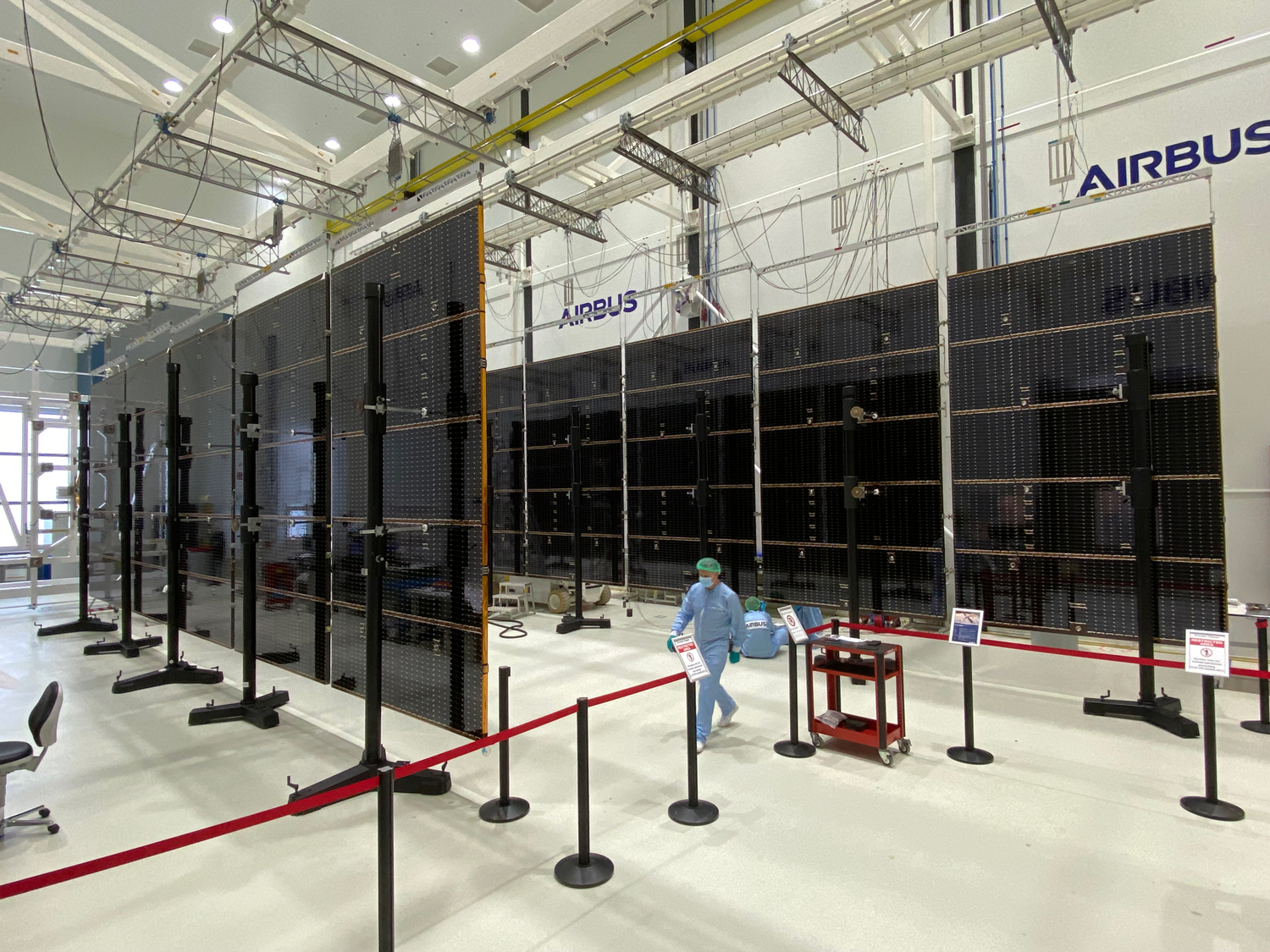All Resources
NASA Europa Clipper Solar Arrays Assembly

This image shows the solar array “wings” for NASA’s Europa Clipper in the cleanroom of Airbus in Leiden, the Netherlands, where the solar array wings are being assembled.
Massive solar arrays will collect enough sunlight for the spacecraft’s power needs as it operates in the Jupiter system, which is more than five times as far from the Sun as Earth. Each wing is approximately 46.5 feet (14.2 meters) long and approximately 13.5 feet (4.1 meters) high. With its arrays deployed, the spacecraft spans more than 100 feet (30.5 meters), or about the length of a basketball court. The solar array wings will be integrated onto the spacecraft leading up to the spacecraft’s launch. Learn more about the spacecraft here.
Scientists believe the icy moon Europa has a vast internal ocean that may have conditions suitable for supporting life. Europa Clipper will fly by the moon about 50 times while its suite of science instruments gathers data on the moon’s atmosphere, surface, and interior – information that will help scientists learn more about the ocean, the ice crust, and potential plumes that may be venting subsurface water into space.


